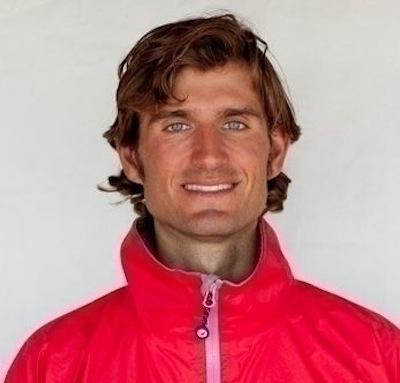Olympians speak at Marion Yacht Club
The U.S. Sailing Team’s national tour stopped at the Beverly Yacht Club in Marion on Saturday, and it brought an Olympic athlete back to the harbor where he learned to sail.
Two-time Olympian Stuart McNay, 32, answered questions as part of a five-person panel that included Josh Adams, the team’s managing director and a former Tabor Academy student.
This was the team’s fifth stop in a nationwide tour that started in San Francisco.
Joining them were athletes Trevor Burd, Hugh Freund and Annie Haeger for a session that touched on training techniques, ocean conditions near Rio de Janeiro, Brazil (home of the 2016 Summer Olympics) and other matters. In Rio, McNay hopes to earn a medal in his competition, the Men’s 470. The 470 is a 15-foot sailboat that’s been considered Olympic-class since 1976.
The former Wareham resident, who now lives in Providence, R.I., learned to sail at a Tabor Academy summer day camp as a 9-year-old. Many sports and activities were offered, but McNay found his calling on the water.
“I was so into sailing that the instructors suggested that my parents think about sending me to the Beverly Yacht Club,” said McNay, a skipper with the U.S. team whose other notable sailing achievements include first place in team racing in the 2009 U.S. Team Racing Championship, first in team racing in the 2012 U.S. Team Racing Championship, second in the 2012 U.S. Match Racing Championship, and second in the 2009 ISAF Sailing World Cup Standings. “We didn’t have any connections at the club, but there was a way for me to become a junior member and sail.”
He joined the youth Optimist program, named after the brand of boats that junior members use.
Buzzards Bay offered ideal conditions for a young sailor to learn the sport, he said.
“The sea breeze in the summer regularly blows at 15 to 20 knots from the south, southwest. As it changes you deal with light, medium and heavy air. You learn to make the proper adjustments for those changing conditions,” he said. “That was very important for me.”
Audience members asked questions about training, changing Olympic standards and an issue that’s not on most South Coast sailor’s radar – water quality.
“It is a polluted body of water,” Adams said, referring to Rio de Janeiro's harbor. Athletes at the Beijing Summer Olympics faced a similar problem. McNay, whose team finished 13th in those games, said a sailing crew had capsized. One member swallowed some of the water and became ill after ingesting a parasite.
“There were some real, long term health consequences for that athlete," said McNay, who finished 14th in London in '12.
Adams said although water quality remains an issue, it's not one the U.S. Sailing Team dwells on. As a precaution, water samples will be taken from the harbor and tested ahead of the games, and the athletes will also have access to antibiotics.
Most importantly: “We’ll avoid any unnecessary capsizes,” Adams said.
In the meantime, the team continues to prepare. While its $15 million budget is dwarfed by the amount spent by British and Australian teams – the Brit’s budget is three times as large; the Aussie’s twice as a big – U.S. Sailing will be training hard.
“It’s incredibly competitive,” Adams said. “We are fortunate to have these four athletes who have dedicated their lives to get on that Olympic podium.”














